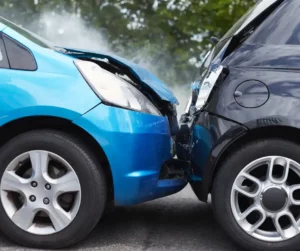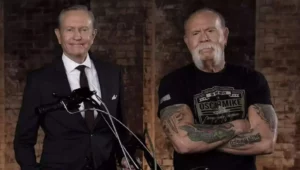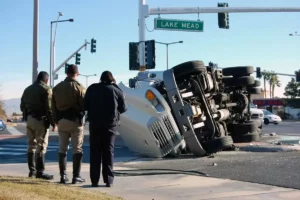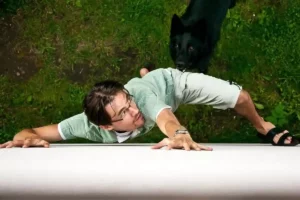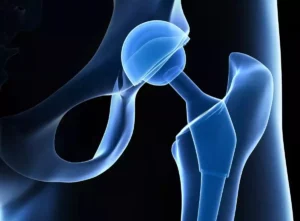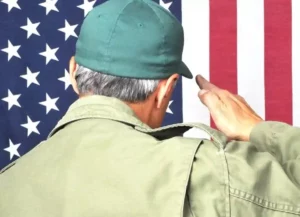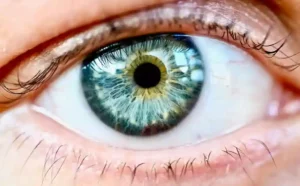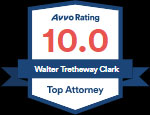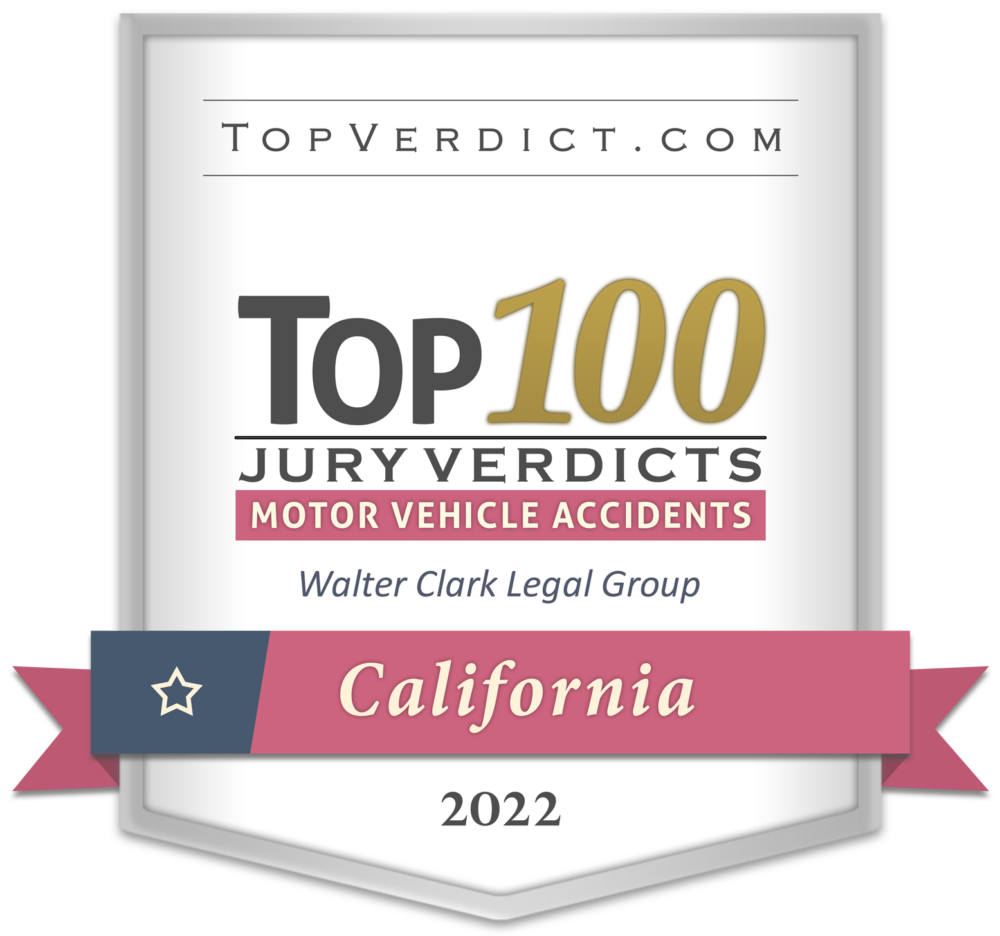After Stephen Eimers’ daughter died last year after her vehicle struck a guardrail on a Tennessee highway, he made it his mission to warn others about the dangers of unsafe highway guardrails. Hannah Eimers, 17, was killed when her vehicle ran into a guardrail equipped with an X-Lite end terminal.
Guardrails are designed to absorb the energy of a crash. However, the structure of the X-Lite end terminal can cause a guardrail to act as a spear. This was the case for Hannah Eimers. At least six others have also suffered this fate since the X-Lite was introduced to U.S. highways. Guardrail end terminals should crumple upon impact. However, in these cases, the guardrail impaled the vehicles, killing the drivers.
In December, a Virginia woman was killed after she drove off the interstate and struck an X-Lite end terminal. Rather than “telescoping” like it should—where the pieces of the guardrail slide into each other, absorbing crash impact and prevent metal from piercing the vehicle—the guardrail rode up over the hood of her vehicle. It crushed her windshield and ripped open the roof. The second section of the guardrail penetrated the driver’s door, and the woman suffered fatal head injuries.
Despite these claims, X-Lite manufacturer Lindsay Transportation Solutions continues to stand by the safety of its guardrail end device. According to the president of Lindsay’s infrastructure division, Scott Marion, “there are impact conditions that exceed the performance expectations of all safety equipment, and and equipment’s inability to prevent every tragedy does not indicate a flaw or defect.
2 States Commit to Removing Unsafe Highway Guardrails
Eimers has petitioned states across the country to take the X-Lite guardrail ends off their highways. So far, 30 states either don’t use the devices or have committed to removing them. Last year, Eimers’ home state of Tennessee announced they would replace the X-Lites, a $3.6 million commitment. Following the death of George Jansen on a Missouri Highway in February, the state of Missouri also committed to replacing all of its X-Lite guardrail ends.
Another Guardrail Company Sued for Fraud
Lindsay Transportation Solutions introduced the X-Lite several years ago. However, it did not gain much traction until another company took its guardrail end device off the market. Two years ago, Trinity Highway Products was sued for fraud in connection with its ET-Plus guardrail end. According to the lawsuit, the company failed to inform the FHWA of changes it had made to the device. The company lost the suit and was hit with a $663 million settlement. Trinity took its guardrail device off the market, creating the opening Lindsay needed to sell its product to state governments.
Who Approved X-Lite Guardrails for Use Along Highways?
The standard for approving devices for use on state highways is an eligibility note from the Federal Highway Administration (FHWA). The document states that the device has passed required crash tests. However, the note also includes a disclaimer stating that a device’s eligibility does not equal endorsement or approval by the FHWA. From there, it is up to the state to choose which devices it will go with.
However, states often cannot afford their own testing. Many depend on the accuracy of these eligibility notes to determine which products they buy, even though the FHWA says it does not necessarily endorse the devices.
But the FHWA does not actually perform the crash tests itself. Tests are paid for by the device manufacturers and are performed at independently operated labs. In the case of the X-Lite device, testing was performed at Safe Technologies Inc.—a lab that is owned by Lindsay Transportation Solutions.
The Government Accountability Office (GAO), a watchdog organization, determined that the FHWA does not have a process for verifying the results of the crash tests performed by these labs. According to the GAO study, six of the nine labs that exist to evaluate these products were developed by the employees of the product manufacturer. Two of the labs are owned by companies that develop roadside safety products.
Although the FHWA does not endorse any highway safety products, it provides 80-90% of the funds for all state highway projects. Thus, a majority of the testing and funding for these projects goes through the federal organization; yet, states are responsible for making the final decision. And when things go awry with the equipment they use, like they have with these unsafe highway guardrails, states have little recourse against the device manufacturers.
Will Manufacturer Lose its FHWA Eligibility?
In response to the outrage over the X-Lite guardrail ends, the FHWA reviewed the company’s letter of eligibility. However, they reported that they had insufficient data to make a final decision on the matter. They are continuing to monitor the X-Lite and other guardrail ends to gather more information and make a decision.
“If these guardrail end devices are not performing as they should and are instead causing more harm to motorists, they are a public safety hazard and should be replaced,” said Attorney Walter Clark, founder of Walter Clark Legal Group.
Our firm has been handling personal injury cases throughout the California Low Desert and High Desert communities for over 30 years. With a 95% success rate, the California personal injury attorneys at Walter Clark Legal Group will fight to hold those responsible for your loss accountable and win compensation to cover medical bills, lost wages, and pain and suffering. If you have been injured in an auto accident and want to discuss your legal options, contact us today for a free consultation with an experienced personal injury lawyer. We have offices in Indio, Rancho Mirage, Victorville, and Yucca Valley and represent clients through the entire California Low Desert and High Desert communities.
DISCLAIMER: The Walter Clark Legal Group blog is intended for general information purposes only and is not intended as legal or medical advice. References to laws are based on general legal practices and vary by location. Information reported comes from secondary news sources. We do handle these types of cases, but whether or not the individuals and/or loved ones involved in these accidents choose to be represented by a law firm is a personal choice we respect. Should you find any of the information incorrect, we welcome you to contact us with corrections.
- What To Do If You Have Been Injured At A Concert In California? Mar 27,2024
- Walter Clark Legal Group Reimburses Thanksgiving Ride Fares Nov 14,2023
- Walter Clark Legal Group Donates Backpacks to Booker T. Washington Elementary School Aug 22,2023
- Walter Clark Legal Group Donates Backpacks to Underserved Students Aug 22,2023
- Walter Clark Legal Group Reimburses Labor Day Ride Fares Aug 21,2023
- 2023 Safe Ride Home Program Jun 21,2023









